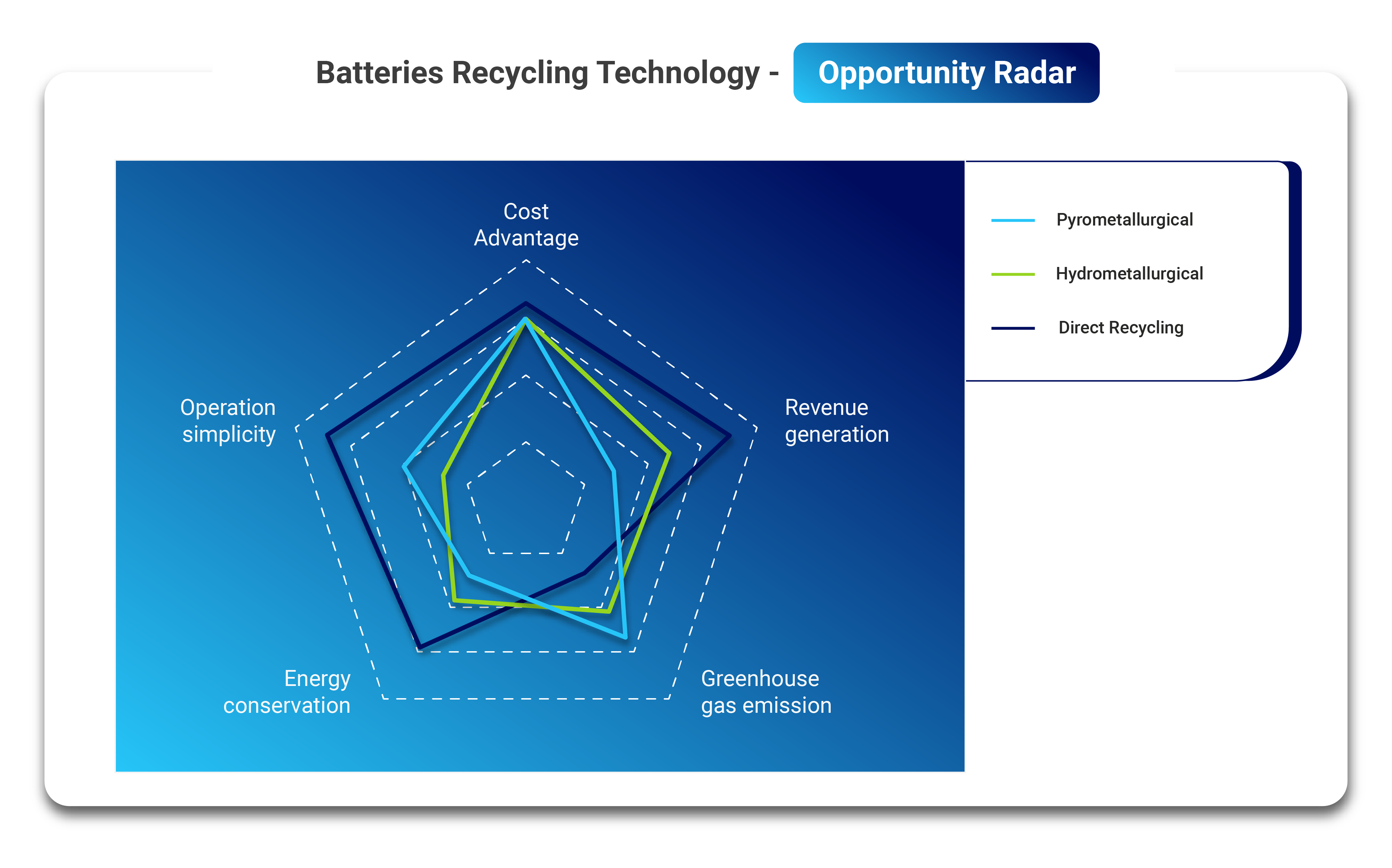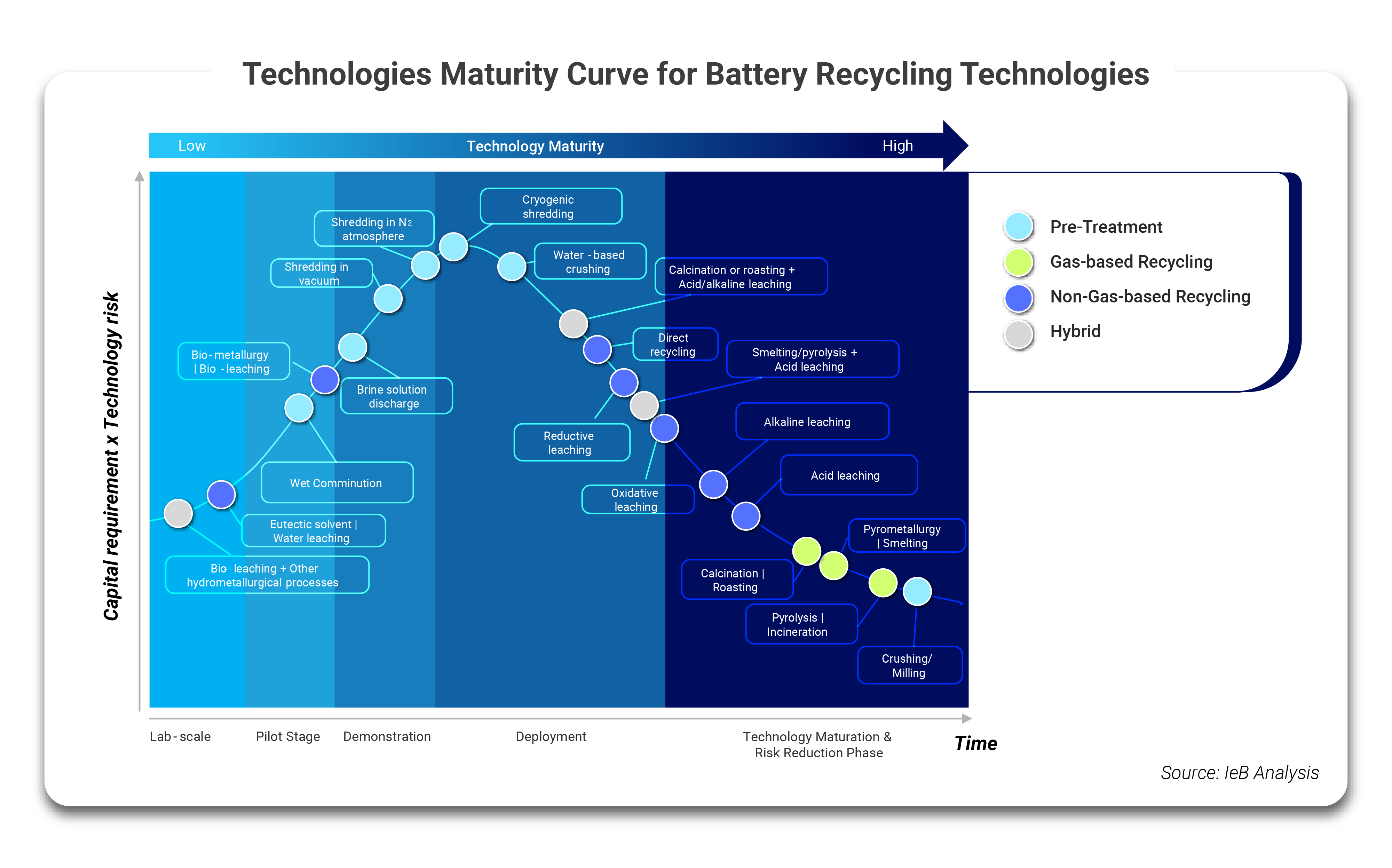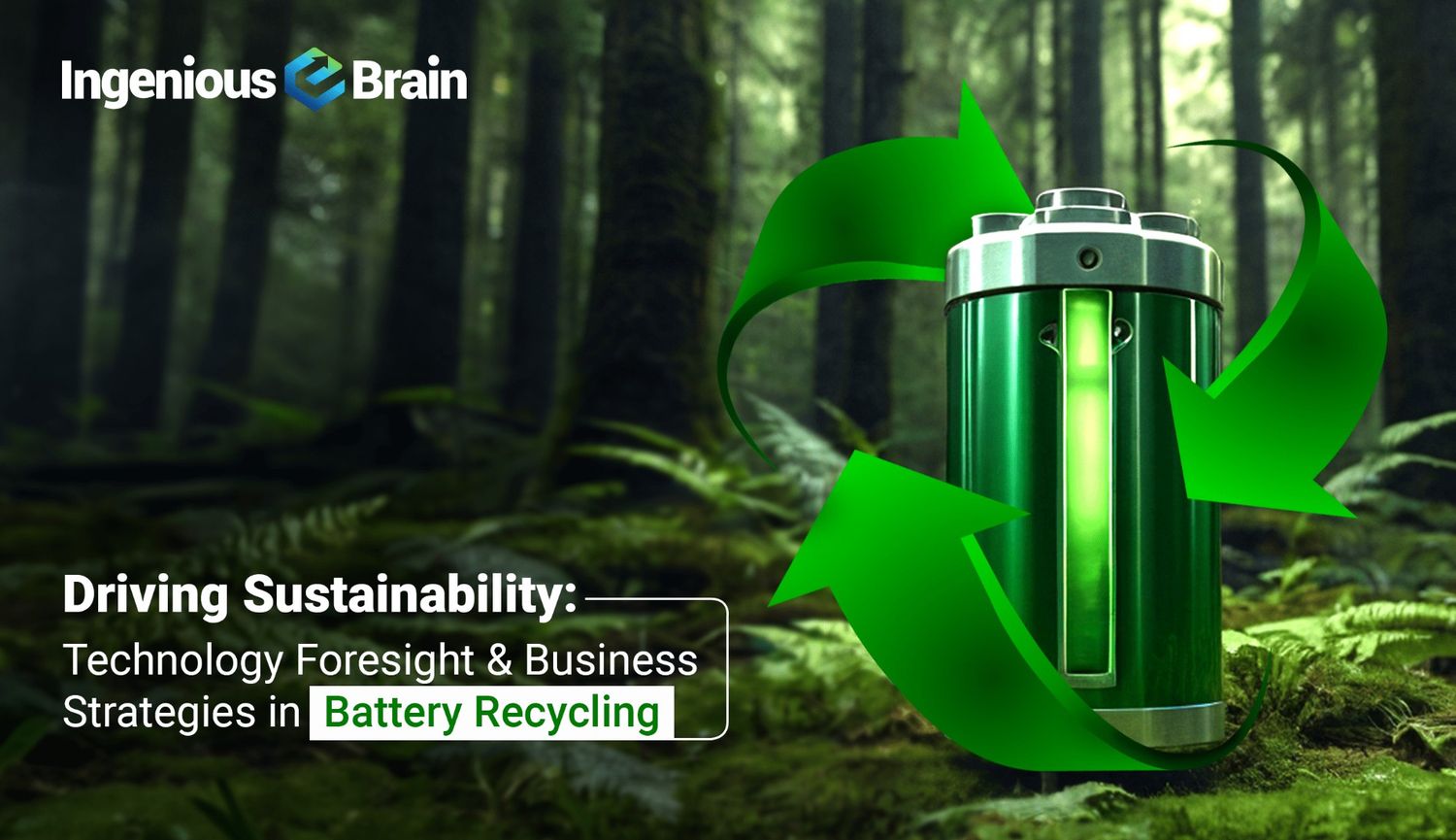Driving Sustainability: Technology Foresight & Business Strategies in Battery Recycling
Overview
Battery recycling technologies are revolutionizing sustainable practices by efficiently recovering valuable metals such as lithium, cobalt, and nickel from end-of-life batteries. With the soaring demand for batteries, especially in the mobility and energy storage systems, these advanced technologies are pivotal in reducing environmental impact and dependence on finite resources. Integrating cutting-edge recycling processes not only lowers the carbon footprint of battery production but also propels the circular economy forward, underscoring the synergy between technological innovation and ecological stewardship.
While battery recycling technologies have seen significant progress, there are still hurdles to overcome. Efficient recovery, cost-effectiveness, and scalability are key milestones that need to be accomplished to meet the growing demands and sustainability objectives. Thus, innovators relentlessly pursue new and improved technologies to overcome these obstacles and ensure a sustainable future.
Comparative analysis of battery recycling methods
The analysis conducted by IeB experts on battery recycling technologies reveals distinct advantages and challenges across battery recycling processes. The renowned metal extraction process, hydrometallurgy, stands out for its adaptability, high recovery rates, and low energy consumption, but it suffers from high operational costs and significant wastewater production. Pyrometallurgy is valued for its ease of use and versatility, yet it demands high energy, produces hazardous emissions, and requires complex gas clean-up processes. Direct Recycling, still in the development phase, promises to preserve cathode active materials and significantly cut economic and energy costs. However, it faces high initial setup costs and potential performance issues with recovered materials.

Understanding the technology readiness levels of battery recycling technologies
Battery recycling technologies encompass a range of methods aimed at efficiently extracting valuable materials from used batteries, promoting sustainability by reducing the need for new raw materials and minimizing environmental impact. The key biological processes—bio-metallurgy and bio-leaching—are employed to extract metals, offering environmentally friendly solutions. Shredding in nitrogen atmospheres and vacuum conditions helps break down batteries with minimal oxidation. Water-based crushing and brine solution discharge are employed for the mechanical separation of components. More advanced methods, like alkaline and acid leaching, involve chemical treatments to recover specific metals. Pyrolysis and incineration use high temperatures to decompose materials, while direct recycling and smelting processes focus on reusing battery components. These technologies represent a continuum of innovative approaches to enhancing sustainability in battery management.

Current scenario
In March 2024, the European Council, recognizing the imminent surge in demand for rare earths, urgently adopted the European Critical Raw Materials Act (CRMA). This act, with its three crucial benchmarks for the EU’s annual consumption of raw materials, is a clear signal for immediate action: 10% from local extraction, 40% to be processed in the EU, and 25% from recycled materials. Additionally, in 2023, the council enacted a regulation to enhance sustainability rules for batteries and waste batteries, requiring producers to collect waste batteries and recover lithium and other elements from spent batteries. These prompt automotive OEMs and battery producers to assess their supply chains for vulnerabilities. The final text identifies two lists of materials (34 critical and 17 strategic) crucial for automotive EV powertrains and strongly requires circularity in the supply chain to meet future demand.
CRMA demands five strategic EU sectors: renewables, electric mobility (e-mobility), industry, and information and communications technology (ICT). The regulatory requirements and sustainability initiatives are propelling businesses and governments towards adopting more sustainable practices, including responsible battery waste management. In response to these challenges, new technologies are being developed around hydrometallurgical and pyrometallurgical processes, along with pre-treatment/refining methods, to efficiently recover and recycle materials from end-of-life batteries, enabling closed-loop systems and reducing the need for new raw materials. However, the key to establishing a robust recycling infrastructure and policies lies in the partnerships and collaborations between battery manufacturers, recyclers, and government agencies, highlighting the importance of collective action in this endeavor.
Business implications and growth potential
Exploring opportunities in battery recycling is crucial for businesses and organizations aiming to align with sustainability goals, comply with regulatory requirements, and capitalize on the growing demand for recycled materials. Ingenious e-Brain offers a comprehensive suite of services, including market research, technology assessment, and strategic planning, to support enterprises exploring such opportunities. Our expertise not only helps businesses create new revenue streams but also enhances their brand reputation as leaders in environmental responsibility. This shift towards sustainability is not just a regulatory requirement but a promising avenue for growth and positive change.
For critical insights from our IeB technology analysts and business consultants, email them directly at contact@iebrain.com.

